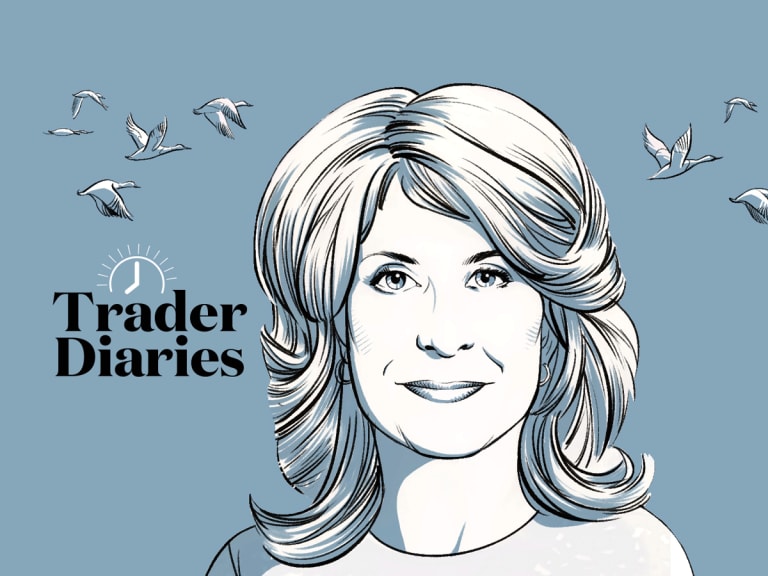At a time when most traders were scrambling from the worst economic downturn since the Great Depression, Samantha LaDuc was just starting out trading.
Her first foray into the financial market came on 18 September, just three days after the collapse of Lehman Brothers.
It was a tough time for any investor, let alone a new trader, but LaDuc persevered. Despite knowing almost nothing about stock market trading, she had good business acumen and began studying intensely under the guidance of several traders and money managers.
During this time, she quickly learnt how to short stocks and managed to gain 450% on a $100,000 investment within six months. This developed into the ability to time markets, anticipating inflection points from a deeper understanding of why a stock is moving, which led to LaDuc’s use of big picture thinking for her technical setups.
450%
LaDuc's return on a $100,000 investment within six months
As a result of trading under such unpredictable conditions, LaDuc has developed a strategy heavily centred on volatility and risk-defined options.
A self-described macro-to-micro strategic analyst, LaDuc is a full-time day trader and educator based near Boston, Massachusetts. She offers research and analysis via her platform
LaDuc Trading, which she established in 2017.
LaDuc also engages with a community of retail traders and small institutions through trade alerts, daily newsletters and a live trading room – the technology of which she helped build so that trades entered into her interactive broker were automatically shared with her clients, in an open book contract.
This transparency is important to LaDuc, as it means she can’t just cherry-pick the best ideas. “You get to see the good, the bad and the ugly – it’s all there – and also the rationale behind it,” she tells Opto.
In the interest of continuing this transparency, here’s a look at LaDuc’s typical trading day.
Before the markets open: running the gamut of financial news
LaDuc starts her day by reviewing market movements across all asset classes from the previous night over a cup of tea. As she dives into this sea of financial news, her cat Stella is often curled up in her lap.
“You get to see the good, the bad and the ugly – it’s all there – and also the rationale behind it”
“I want to know everything I possibly can about what’s happened during the overnight session. I'm looking for news that might be market moving as well as any stocks of interest that I have on my radar.”
She uses a ton of resources to collect data – from news publications such as Bloomberg, to a variety of email letters newsletters and even checking what other day traders are doing on TweetDeck. As one of her greatest skills, LaDuc will scan and synthesize information and operationalise it into a trade, “because what you do with it is what matters”.
After she’s thoroughly reviewed the markets, she will go into her trading room to set up for the day. By this point, LaDuc has got a very clear idea of what particular stocks she will chase or swing, but she may even just watch to see how the markets are acting.
Early trading: determining whether to chase, swing or trend
From 9:00am to 12:00pm, LaDuc is in full-trading mode. On one of the several desktop screens she has, she will be engaging in trades as her clients tune in to watch her commentate on what she’s interested in and why. On another, she will be following the news.
To ensure she’s getting the full picture from multiple perspectives, LaDuc will also use several different charting platforms doing different jobs – TC2000 or Thinkorswim provide real-time data, while StockCharts allows LaDuc to build custom indicators for her intermarket analysis studies, for instance.
Armed with a directional trading strategy and a focus for trading options on equities, LaDuc moves between three primary timeframes when trading. She spends about 25% of her time on chase trades for example, which can go on for one to three days. Swings take up the bulk of her attention and will last one to three weeks. Trends, which take up about 25% of her book, last one to three months.
“I’m basing my entry on an expectation of volatility, moving it one way or the other. It is not playing the fate of decay, like option sellers, it is timing a directional move,” LaDuc explains.
“I’m basing my entry on an expectation of volatility, moving it one way or the other ... it is timing a directional move"
Indeed, when she is placing a position on a trade, it comes down to three things: volatility, direction and time.
“I am absolutely a volatility trader, so I want volatility to enter that instrument, which is then going to determine the direction. Regardless of the time frame, chase, swing or trend, the same logic applies,” says LaDuc.
“If I am then of the mindset that a particular pattern on a chart is going to produce volatility and that volatility is going to produce a direction, then the hardest part for an options trader is determining how much time to give it – because you can have some false starts.
“Time is the hardest thing to gauge,” LaDuc adds. “That's what determines if it's a chase, a swing or a trend.”
Afternoon trading and after the markets close: setting up the fishing plan
After lunch, LaDuc is back in the trading room where she will continue analysing and trading until 4:00pm.
“Time is the hardest thing to gauge ... That's what determines if it's a chase, a swing or a trend"
During this time, she writes a lot, including articles for publication and updates to her clients. She uses these “fishing plans” to journal her trades.
Through this daily routine, she sets up a plan for the week that indicates her “weather forecasts” and highlights any potential “storms” or risks. “I always look at risks before I look at opportunities,” she explains.
For LaDuc, trading options creates an absolute timeframe that allows her to be more present with her family. Her mantra is simple: “don’t risk anything you are not willing to lose”.






